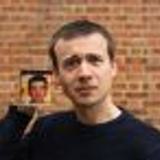

What Has Changed in SEO? | Whiteboard Friday Revisited With Cyrus Shepard
What's changed between 2021 and 2025? Is everything different? Think again! In this new series, Jo Cameron and Cyrus Shepard discuss his popular Whiteboard Friday episode to find out what tactics are still relevant and what the future holds.
![How to Create an SEO Forecast [Free Template Included] — Whiteboard Friday](https://moz.rankious.com/_moz/images/blog/banners/WBF-SEOForecasting-Blog_Header.png?auto=compress%2Cformat&fit=crop&dm=1694010279&s=318ed1d453ed4f230e8e4b50ecee5417)
























